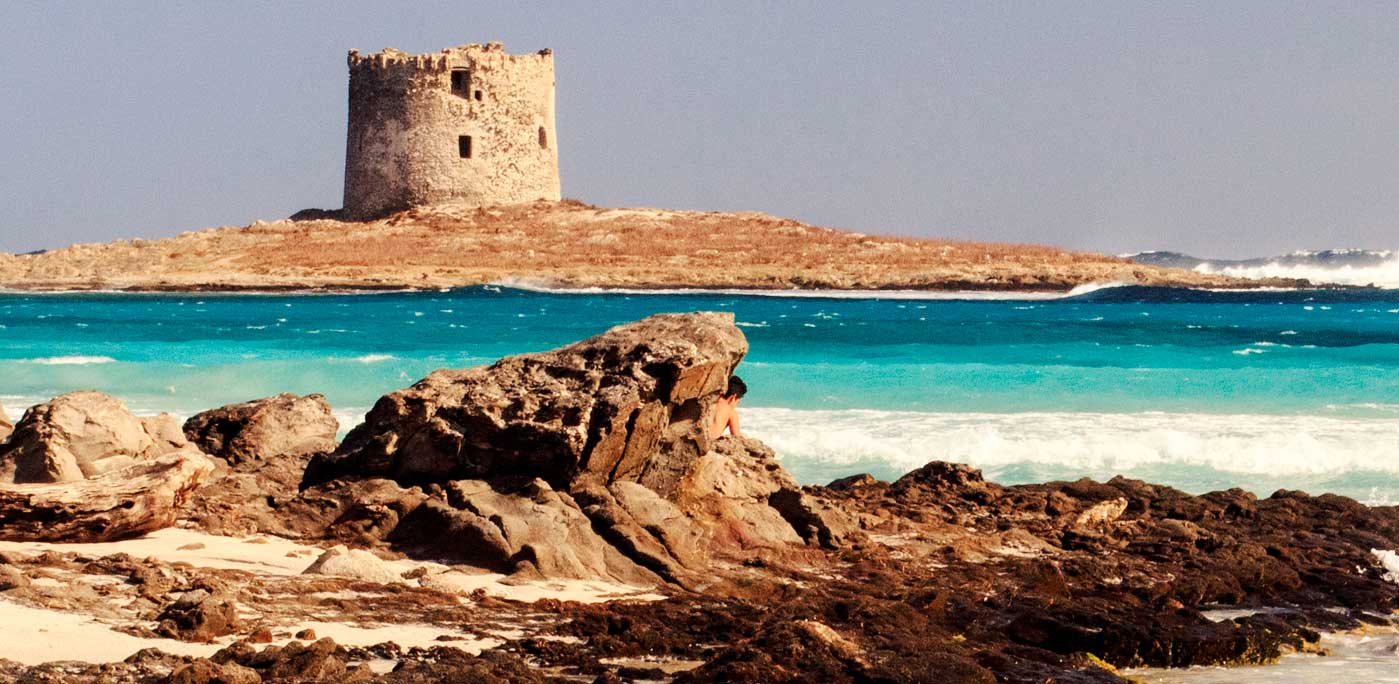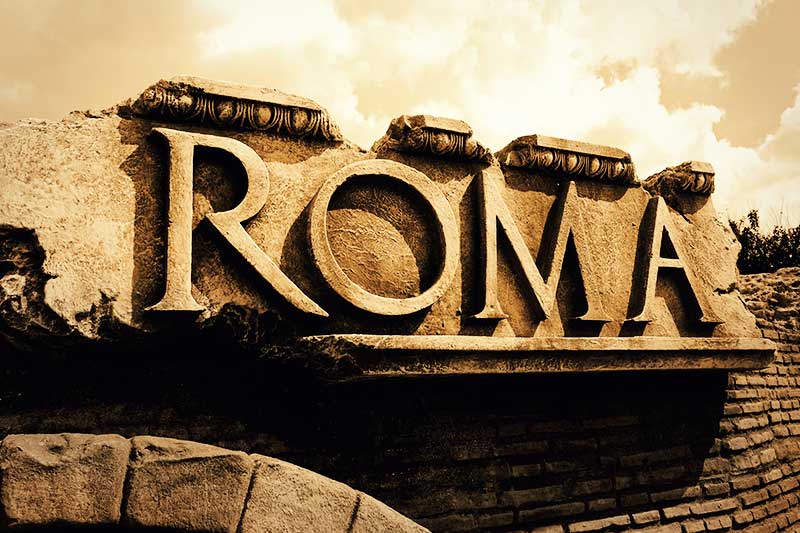What comes to your mind when you think of Sardinia? Azure sea, sandy beaches, VIP resorts. If you are a bit more knowledgeable, your thoughts may also go to the island’s beautifully wild inland, or to the interesting features of its dialect.
But Sardinia is more, Sardinia is a heaven for the historian and the archaeologist, in a way only a handful of other places in the country are. Sardinia is the region of mystery, the home to pre-Roman civilizations of which we know almost nothing. Majestic and obscure symbols of them, as well as of the region as a whole, are nuraghi, ancient tower-like buildings peppering the Sardinian landscape, whose origins and use remain shrouded in mystery. As obscure as they may be, nuraghi have become part of the UNESCO World Heritage List in 1997, as “they represent a masterpiece of Man creative genius.”
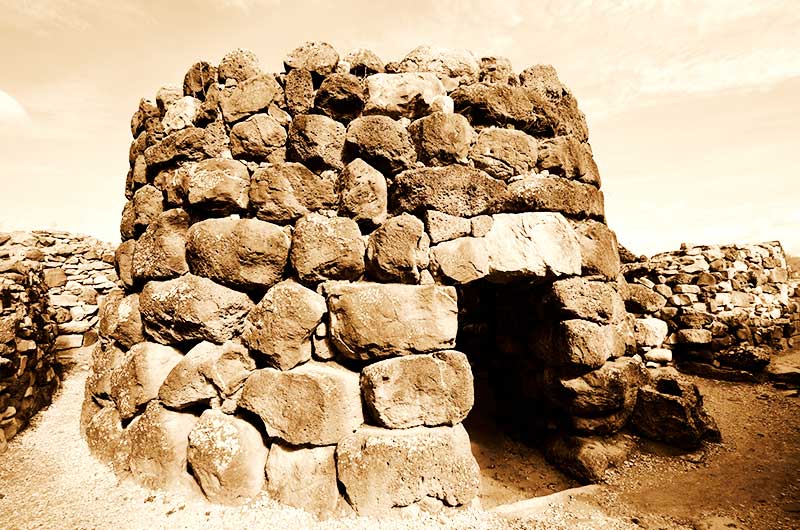
(Copyright: Dreamstime)
But what were nuraghi built for and who was the Nuragic civilization? These questions have left researchers and historians baffled for decades, but today there seems to be some more clarity about it.
Historians believe the Nuragic civilization developed between the years 1800 and 238 BC. Even if they had little to no contact with other cultures, they were already there when the Pharaohs of the New Kingdom ruled over Egypt, when Athens and Sparta fought against each other and, of course, when Rome was created. Yet, these people were content with their own relatively isolated, insular life in Sardinia, based on agriculture and farming. They did create commercial relations with other Mediterranean people all along their existence, but they ultimately remained a self sufficient civilization, proud and satisfied with their life in Sardinia.

(Copyright: Dreamstime)
Their society was highly hierarchical and warriors were its leaders, along with high priests: war and religion were at the heart of this culture.
This is the world of nuraghi, these are the people who built them. But why and how?
Let’s start with the word itself. Nuraghe comes from a pre-indoeuropean word, nur, which means “hollow pile of stones.” In the Sardinian language a similar word, nurra, still exist with the same meaning. There are also many geographical names around the island with the same etymology, like the region of Nurra, around Alghero, or the villages of Nurachi, Nuraminis and Nurri.
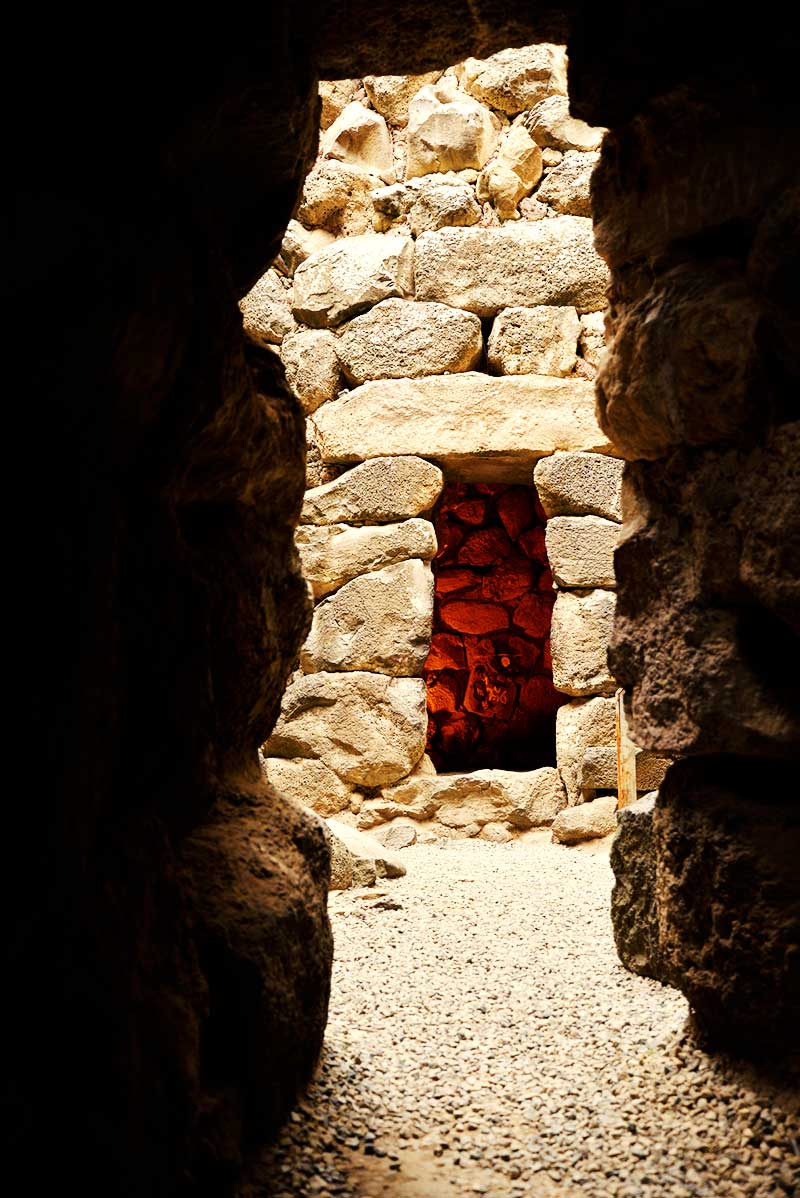
(Copyright: Dreamstime)
Although only parts of these imposing buildings remain, it is simple to understand how large and majestic they were and that’s why their most common architectural style is known as cyclopic. Typical of it was the use of large, roughly cut polygonal stones, very likely secured to one another by using mud and mortar. In later centuries, nuraghi were built using a different style, called isodomic, which preferred regularly cut stones, assembled in lines.
While the nitty-gritty of their architecture was discovered and explained with relative ease, the actual use of nuraghi remains a bit of a mystery, which only adds to their charm, if you ask me. Plenty of theories have been developed through the decades, some more believable than others, all quite interesting to tell.
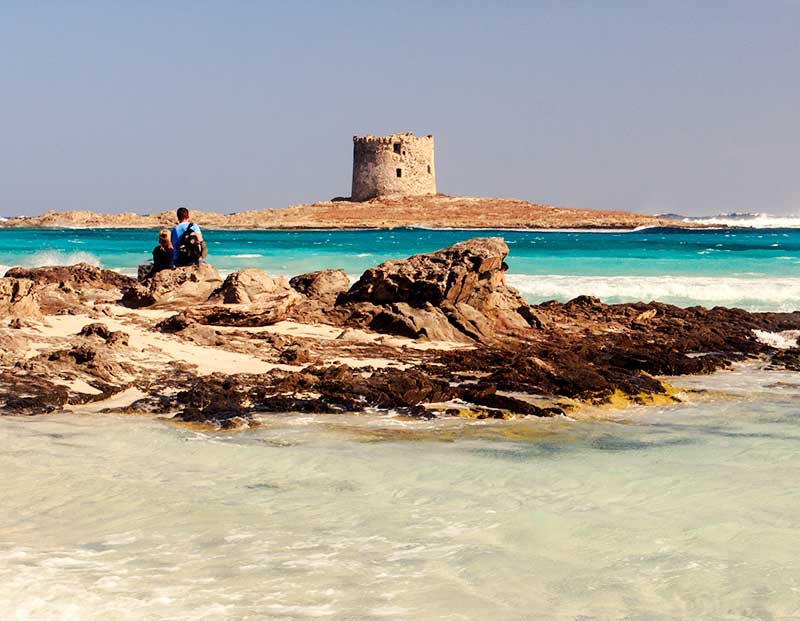
(Copyright: Dreamstime)
They were military constructions
This remains one of the most common theories about nuraghi’s use: they were likely to be watchtowers or fortresses, created to protect and control the surrounding area. Indeed, some archaeologists pointed out they resemble a lot, in structure and shape, to medieval tower houses, which were typically used for defensive purposes.
Although common, this theory has been also widely criticized: for a start, there seemed not to be enough space inside a nuraghe to allow a number of people to survive potentially long attacks. Archaeologists found no space for weapons or even food storage. Their sheer number on the Sardinian territory also seems an issue: with more than 7,000 units across a relatively small territory, we should believe the Nuragic civilization lived in a state of perennial war. While this is not impossible, there isn’t any archaeological or historical proof pointing in that direction.
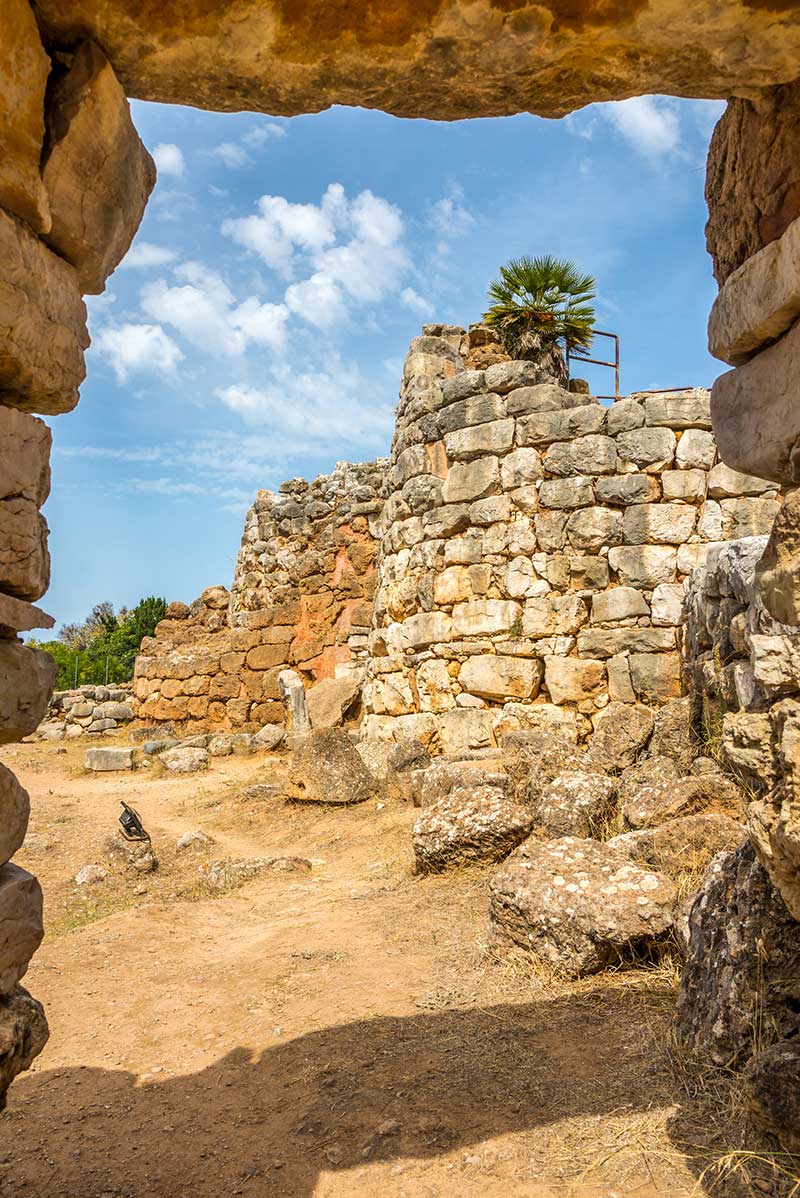
(Copyright: Dreamstime)
They had a religious role
Another theory wants nuraghi to be religious buildings symbolizing the way Man managed to conquer and subdue the land around, a sign of how civilization won a war against nature. A bit controversial as an explenation, if you ask me.
The spiritual role of nuraghi has also been interpreted in another manner, that is, as a way to connect the Earth and the Sky and mirroring the spiritual, “above” dimension, on Earth.
They may have had more than one use
Alas, as it often is the case, nuraghi may, in the end, have been built and used with more than one aim in mind. They may have been watchtowers that also had powerful symbolic functions, but the truth is we don’t have any solid archaeological and historical proof for any of this. The mystery of nuraghi, then, continues.
Their uniqueness transformed nuraghi in real symbols of Sardinia. The most famous of them all is the Nuraghe of Barumini, also known as Su Nuraxi. Among the most complete structurally, Su Nuraxi was chosen by UNESCO to represent all Sardinian nuraghi for their Heritage List. You’ll find it near Cagliari, on the way leading to Oristano.

(Copyright: Dreamstime)
Nuraghe Arrubbiu is the largest nuraghe in Sardinia and is characterized by a peculiar reddish color of the stones it was built with, caused by a lichen living on them.
Nuraghe Losa is part of the Abbasanta municipality, in the province of Oristano and it’s known for being triangular, which is pretty peculiar for a nuraghe. Nuraghe Losa is also one of the spookiest, because archaeologists found a large amount of human bones while excavating it. Its very name, losa means graveyard.
Last but not certainly least, wee should remember the nuraghe Santu Antine, near Torralba in the Cabu Abbas valley (Sassari). This is an interesting location because the nuragic tower is surrounded by the remains of a small village: a proof of the importance of these buildings in the everyday life of ancient Nuragic people.
Regardless to their actual meaning and use, nuraghi remain the most important vestige of a civilization predating the Romans of centuries and whose presence made and shaped the culture and looks of one of Italy’s most beautiful regions, Sardinia.
Cosa ti viene in mente quando pensi alla Sardegna? Mare azzurro, spiagge sabbiose, località VIP. Se siete un po’ più esperti, i vostri pensieri possono andare anche all’entroterra meravigliosamente selvaggio dell’isola, o alle interessanti caratteristiche del suo dialetto.
Ma la Sardegna è di più, la Sardegna è un paradiso per lo storico e l’archeologo, nel modo in cui possono esserlo solo una manciata di altri luoghi del paese. La Sardegna è la regione del mistero, la patria di civiltà pre-romane di cui non sappiamo quasi nulla. Simboli maestosi e oscuri di questi popoli, così come di tutta la regione, sono i nuraghi, antiche costruzioni a torre che punteggiano il paesaggio sardo, le cui origini e la cui destinazione d’uso rimangono avvolte nel mistero. Per quanto oscuri, i nuraghi sono entrati a far parte della Lista del Patrimonio Mondiale dell’UNESCO nel 1997, in quanto “rappresentano un capolavoro del genio creativo dell’uomo”.
Ma per cosa sono stati costruiti i nuraghi e cos’era la civiltà nuragica? Queste domande hanno lasciato perplessi per decenni i ricercatori e gli storici, ma oggi sembra che ci sia un po’ più di chiarezza al riguardo.
Gli storici ritengono che la civiltà nuragica si sia sviluppata tra il 1800 e il 238 a.C. Anche se avevano pochi o nessun contatto con altre culture, erano già presenti quando i Faraoni del Nuovo Regno dominavano l’Egitto, quando Atene e Sparta combattevano l’una contro l’altra e, naturalmente, quando fu fondata Roma. Tuttavia, queste popolazioni si accontentavano di una vita relativamente isolata e insulare in Sardegna, basata sull’agricoltura e la coltivazione. Crearono relazioni commerciali con altri popoli del Mediterraneo per tutta la loro esistenza, ma alla fine rimasero una civiltà autosufficiente, orgogliosa e soddisfatta della loro vita in Sardegna.
La loro società era altamente gerarchica e i guerrieri ne erano i leader, insieme ai sommi sacerdoti: la guerra e la religione erano al centro di questa cultura.
Questo è il mondo dei nuraghi, queste sono le persone che li hanno costruiti. Ma perché e come?
Partiamo dalla parola stessa. Nuraghe deriva da una parola pre-indoeuropea, nur, che significa “mucchio cavo di pietre”. In sardo una parola simile, nurra, esiste ancora con lo stesso significato. Ci sono anche molti nomi geografici intorno all’isola con la stessa etimologia, come la regione di Nurra, intorno ad Alghero, o i villaggi di Nurachi, Nuraminis e Nurri.
Sebbene rimangano solo parti di questi imponenti edifici, è semplice capire quanto fossero grandi e maestosi ed è per questo che il loro stile architettonico più comune è conosciuto come ciclopico. Tipico è l’uso di grandi pietre poligonali tagliate grossolanamente, molto probabilmente fissate l’una all’altra con fango e malta. Nei secoli successivi, i nuraghi furono costruiti con uno stile diverso, detto isodomico, che preferiva tagliare regolarmente le pietre, assemblate in linea.
Mentre l’originalità della loro architettura è stata scoperta e spiegata con relativa facilità, l’uso effettivo dei nuraghi rimane un po’ misterioso, il che non fa che aumentare il loro fascino, a mio parere. Nel corso dei decenni sono state sviluppate molte teorie, alcune più credibili di altre, tutte interessanti da raccontare.
Erano costruzioni militari
Questa rimane una delle teorie più comuni sull’uso dei nuraghi: si trattava probabilmente di torri di avvistamento o fortezze, create per proteggere e controllare il territorio circostante. Alcuni archeologi, infatti, hanno sottolineato che assomigliano molto, nella struttura e nella forma, alle case torri medievali, tipicamente utilizzate a scopo difensivo.
Anche se comune, questa teoria è stata ampiamente criticata: per cominciare, non sembrava esserci abbastanza spazio all’interno di un nuraghe per permettere a un certo numero di persone di sopravvivere a potenziali attacchi di lunga durata. Gli archeologi non hanno trovato spazio per le armi e nemmeno per la conservazione del cibo. Anche il loro numero sul territorio sardo sembra un problema: con più di 7.000 unità in un territorio relativamente piccolo, dovremmo credere che la civiltà nuragica abbia vissuto in uno stato di guerra perenne. Anche se questo non è impossibile, non ci sono prove archeologiche o storiche che puntano in quella direzione.
Avevano un ruolo religioso
Un’altra teoria vuole che i nuraghi siano edifici religiosi che simboleggiano il modo in cui l’uomo è riuscito a conquistare e sottomettere la terra circostante, segno di come la civiltà ha vinto una guerra contro la natura. Un po’ controversa come spiegazione, secondo me.
Il ruolo spirituale dei nuraghi è stato interpretato anche in un altro modo, cioè come un modo per collegare la Terra e il Cielo e rispecchiare la dimensione spirituale, “superiore”, sulla Terra.
Possono aver avuto più di un uso
Purtroppo, come spesso accade, i nuraghi possono, alla fine, essere stati costruiti e utilizzati con più di un obiettivo in mente. Forse erano torri di guardia che avevano anche potenti funzioni simboliche, ma la verità è che non abbiamo prove archeologiche e storiche solide per tutto questo. Il mistero dei nuraghi, quindi, continua.
La loro unicità ha trasformato i nuraghi in veri e propri simboli della Sardegna. Il più famoso di tutti è il nuraghe di Barumini, noto anche come Su Nuraxi. Tra i più completi dal punto di vista strutturale, Su Nuraxi è stato scelto dall’UNESCO per rappresentare tutti i nuraghi sardi nella Lista del Patrimonio. Lo troverete nei pressi di Cagliari, sulla strada che porta ad Oristano.
Il nuraghe Arrubbiu è il più grande nuraghe della Sardegna ed è caratterizzato da un particolare colore rossastro delle pietre con cui è stato costruito, per via di un lichene che vi prolifera.
Il nuraghe Losa fa parte del comune di Abbasanta, in provincia di Oristano ed è noto per la sua forma triangolare, piuttosto particolare per un nuraghe. Il nuraghe Losa è anche uno dei più inquietanti, perché gli archeologi hanno trovato una grande quantità di ossa umane mentre lo scavavano. Il suo stesso nome, losa, significa cimitero.
Infine, ma non meno importante, ricordiamo il nuraghe Santu Antine, nei pressi di Torralba nella valle di Cabu Abbas (Sassari). Si tratta di un luogo interessante perché la torre nuragica è circondata dai resti di un piccolo villaggio: una prova dell’importanza di questi edifici nella vita quotidiana degli antichi popoli nuragici.
Indipendentemente dal loro reale significato e uso, i nuraghi rimangono le più importanti vestigia di una civiltà precedente di secoli a quella dei Romani e la cui presenza ha creato e plasmato la cultura e l’aspetto di una delle regioni più belle d’Italia: la Sardegna.






